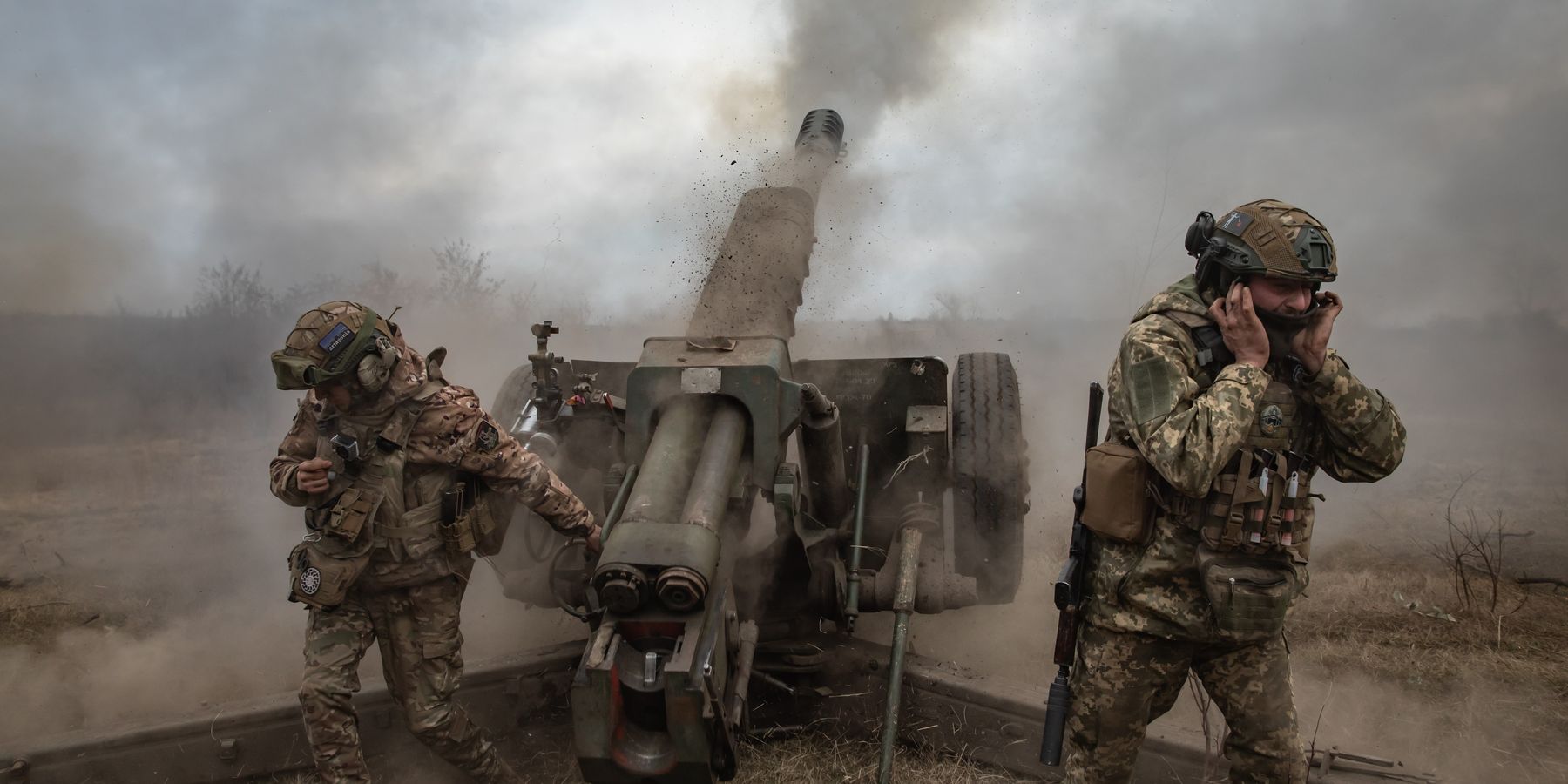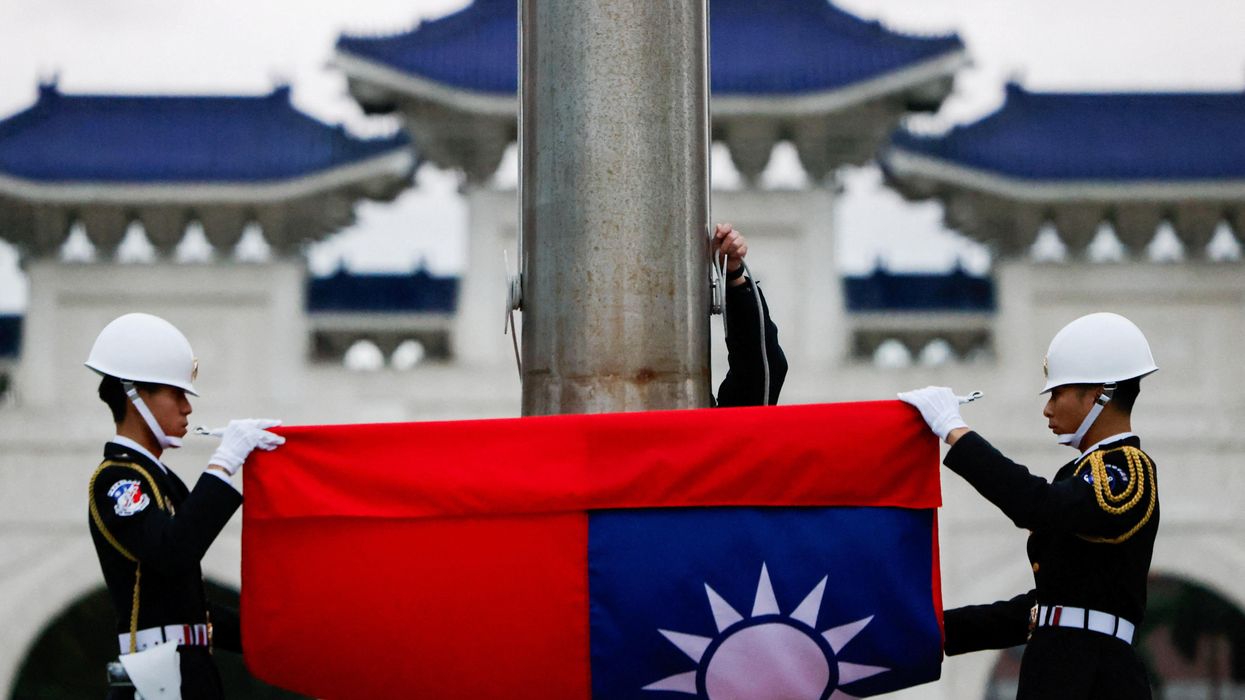As Russian forces steadily advance in the Kharkiv region, it is becoming ever more clear that the Ukraine war has been a disaster for the U.S. defense machine, and not just because our aid has failed to save Ukraine from retreat and possible defeat. More importantly, the war has pitilessly exposed our defense system’s deep, underlying, faults.
Critics have long maintained that our obsession with technologically complex weapons inevitably yields unreliable systems produced in limited numbers because of their predictably high cost. They are furthermore likely to fail in combat because of the military’s lack of interest in adequate testing (lest realistic tests reveal serious shortcomings and thereby threaten the budget.) The unforgiving operational test provided by the Ukraine war has shown that the critics were absolutely right. Successive “game changing” systems - such as the Switchblade drone, the M-1 Abrams tank, Patriot air defense missiles, the M777 howitzer, the Excalibur guided 155 mm artillery round, the HIMARS precision missile, GPS-guided bombs, and Skydio drones endowed with artificial intelligence, were all dispatched to “the fight,” as the military like to call it, with fanfare and high expectations.
All were destined to fail for reasons rooted in the fundamental problems cited above. The $60,000 Switchblade drone, produced in limited numbers due to cost, proved useless against armored targets and was quickly discarded by Ukrainian troops in favor of $700 Chinese commercial models ordered online. The $10 million Abrams tank not only proved distressingly vulnerable to Russian attack drones but in any case broke down repeatedly and was soon withdrawn from combat, though not before the Russians put several out of action and captured at least one, which they took to Moscow and added to a display of Nato weaponry in a Moscow park that included an M777 howitzer and other items of NATO hardware.
The M777 cannon, though touted for its accuracy, has proved too delicate for the rough conditions of sustained combat, with barrels regularly wearing out and requiring replacement in Poland far from the front lines . Notoriously, its 155 mm ammunition has been in short supply. Thanks to the consolidation of the U.S. defense industry into a small number of monopolies, an ill-judged policy eagerly promoted since the Clinton Administration, U.S. domestic production of 155 mm shells is reliant on a single aging General Dynamics plant in Scranton, Pennsylvania, which is struggling to meet its targets.
President Zelensky has been loudly demanding more Patriot launchers and missiles to defend Kharkiv, which is curious, given the apparent ease with which the Russians have targeted Patriots defending Kyiv, and the system’s declining effectiveness against Russian ballistic missiles. HIMARS long range missiles indeed had a deadly effect on high value Russian targets, such as ammunition dumps, but the Russians adapted by dispersing and camouflaging such dumps and other likely targets.
Take it from a Ukrainian: Western Systems “Worthless.”
Strikingly, many of the failures of U.S. weapons, including the HIMARS, in Ukraine have been due to their reliance on a highly vulnerable guidance system: GPS. The Russians, who have long devoted intense care and attention to electronic warfare, have proven increasingly adept at jamming GPS. This has been most witheringly expressed by Maria Berlinskaya, a pioneer in Ukraine’s use of drones and head of the country’s aerial reconnaissance support center, who recently stated that “most Western systems have proven to be [worthless]” thanks to Russian jamming.
Her gloomy assessment was confirmed in April by none other than William LaPlante, Under Secretary of Defense for Acquisition and Sustainment, who told a CSIS conference how a company (Boeing, though he did not name it) had proposed adapting their small diameter GPS guided bomb as a warhead for the HIMARS. It had been accordingly rushed through development and into production, with little or no testing, and shipped off to Ukraine.
“It just didn’t work,” admitted LaPlante, thanks to Russian GPS jammers that threw it off course and caused it to miss. The same sad fate seems to have befallen the Skydio drone, product of an eponymous Silicon Valley startup, whose AI features trumpeted by the company - “Skydio drones have the compute capacity to see, understand, and react in real time” - did not prevent it from being driven off course by Putin’s jammers.
Sullivan and His Pals Drank the Kool Aid the Military Poured for Them.
Needless to say, none of these assorted failures were anticipated by the U.S. military high command, few of whom would be eager to denigrate the wares of contractors with lucrative post-retirement board seats on offer. We might hope that our senior civilian leadership would be aware of such biases and temper their expectations accordingly. Unfortunately, they drank the Kool Aid, as evidenced for their high expectations for the 2023 Ukrainian counter-offensive.
Despite high hopes and lavish supplies of weapons, including tanks, ammunition, drones, intensive training on the territory of NATO allies, and a grounding in U.S. command and control doctrine, the counter-offensive was an immediate and total failure. Planners were apparently caught by surprise by the depth of Russia’s (easily visible) defensive fortifications, especially minefields and the effectiveness of its electronic jamming. Ever since then, Ukraine has been steadily retreating, losing in the process its reserves of military manpower.
Then There’s Corruption.
Not all of Ukraine’s dire situation can be blamed on the military deficiencies of its major Nato ally. The country’s infamous corruption, well known to western governments but generally ignored in the western press, is currently highlighted by its crumbling defenses around Kharkiv. According to an exemplary report by Ukrainian anti-corruption researcher Martyna Boguslavets, published in the Kyiv-based Ukraina Pravda, the huge sums appropriated for building fortifications around the city have simply been stolen. Here is her report (machine translated.)
Martyna Boguslavets
Chairman of the Anti-corruption Center "Mezha"
Where are the fortifications? Kharkiv OVA paid millions to fictitious companies
MONDAY, MAY 13, 2024,
Hundreds of millions of hryvnias have probably been stolen from the construction of fortifications in the Kharkiv region, where the [Russians are] now actively advancing. Multi-million dollar contracts for the construction of fortifications, for which a total of 7 billion hryvnias [$173 million] were spent there, were transferred by the Kharkiv OVA [regional military adminsitration] to front companies of avatars.
In particular, the Department of Housing and Communal Services (ZhKG) and the fuel and energy complex of Kharkiv OVA concluded direct contracts for the supply of wood for fortifications with companies with signs of fictitiousness.
For 270 million [approx $6 million] for wood, information about which is classified, contracts were concluded with FOP Chaus I.O., LLC "Hertz Industry", LLC "Satisbud", LLC "ATT BUILD" and LLC "DEREVOOBROBNE PIDPRIEMSTVO VOSHOD".
All of them started making millions immediately within a few months of signing up. Classic - under direct contracts and without competitive procurement.
It so happened that the department of the Kharkiv OVA for defense procurement chose newly registered anonymous firms and private enterprises. Moreover, the owners of these firms do not resemble successful businessmen and businesswomen - they have dozens of court cases, from whiskey theft to domestic violence against a husband and mother, some of them are deprived of parental rights and have had enforcement proceedings for bank loans.
Another interesting detail - it seems that these beneficiaries do not even know that they are millionaires. After all, they continue to work in shifts "in the fields" and factories.
Once again: in OVA, direct contracts for wood for fortifications have been concluded with companies whose "owners" do not even know that they are making millions. This is how military information is classified.
"Secret" avatars of Kharkiv OVA
It is obvious that contractors for military deals were carefully sought - people who are not rich, with a number of court cases and debts. Some of them are even related to each other.
The scheme started with FOP Chaus Ihor Olegovych. Three months after registration, the OVA department concludes direct contracts with him for the supply of wood worth millions of hryvnias.
It is interesting that in July 2023, when Chaus just registered the FOP, he had enforcement proceedings for a fine from the police. Earlier, he was found guilty of stealing a pint of Jack Daniels from ATB. He served 100 hours of community service for the stolen whiskey. A successful businessman from the bad 2010s
The "successful businesswomen" scheme was continued. Both are from the city of Kamianske, Dnipropetrovsk region.
The first is Victoria Smolyak, owner of Hertz Industry LLC. The company was registered in June 2023, and within a few months it began to earn millions from wood. Again, under direct contracts. In less than a year, the company changes four managers, which is also a sign of fictitiousness.
Mrs. Smolyak has not only a limited liability company, but also 5 enforcement proceedings for recovery from banks, courts for evasion of parental duties. A drunk woman committed domestic violence against her mother. Currently, she works at the Dnipro metallurgical plant.
Not very similar to the owner of a successful company that earned 116 million [$2.9 million] from the OVA department in 9 months?
Send feedback
The second businesswoman is Natalia Koval. LLC "Satisbud" is registered on it three days after the registration of "Hertz Industry". Another successful company, through which more than [$1.3 million] are finnele.
The owner of the company also has a bunch of court cases, in particular, regarding the deprivation of parental rights, being in a public place in a drunken state, committing domestic violence against her husband. As we learned, the woman now works in shifts in the fields.
It is interesting that both "Hertz Industry" LLC and "Satisbud" LLC have the same director - Dmytro Knorozov. It is expected, and he also has enforcement proceedings, where he acts as a debtor.
Through the following companies - "ATT BUD" and "WOOD PROCESSING ENTERPRISE VOSHOD" the Department of Housing and Urban Development of the Kharkiv Oblast is chasing away millions. Their owners and managers are connected to more than 30 more recently established companies with a wide range of activities.
According to this scheme, the naked eye can see how someone, being a member of the government offices, mercilessly registers new companies, using for this purpose people who, due to the circumstances, may not be aware of this. And this someone continues to make money on blood.
Ideally, this should become useful information for law enforcement agencies and further exposure of fictitious companies that steal millions from the Armed Forces. After all, most of these dozens of companies are currently dormant and are probably standing by for further participation in schemes for withdrawing funds into the shadows and tax evasion.
Notably, Boguslavets’ report is based on public documents, available to anyone who cared to probe, which did not apparently include the host of U.S. correspondents covering the war.
This article has been republished with permission from Andrew Cockburn’s Spoils of War
- Iraq, Afghanistan provide lessons on US weapons flows ›
- No magic US weapon left for offensive Ukraine victory ›
















